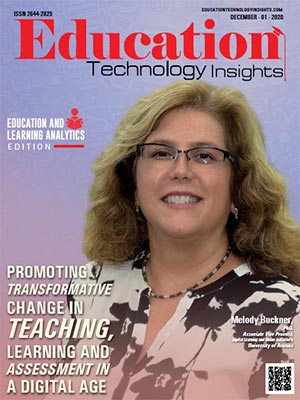THANK YOU FOR SUBSCRIBING
Be first to read the latest tech news, Industry Leader's Insights, and CIO interviews of medium and large enterprises exclusively from Education Technology Insights
Excellence in Data Strategy Yield All-Around Value
Daren Hubbard, Vice President for Information Technology and Chief Information Officer, Georgia Institute of Technology
 Daren Hubbard, Vice President for Information Technology and Chief Information Officer, Georgia Institute of Technology
Daren Hubbard, Vice President for Information Technology and Chief Information Officer, Georgia Institute of TechnologyThe rate of change and advancements in technology make each decision as an IT leader a critical one. Projects are becoming increasingly more transformative and less transactional in nature, and they impact each stakeholder group in ways that must be assessed and addressed carefully.
As the owner of strategy for IT—and in many cases, data management, digital transformation, and cybersecurity—chief information officers are charged with navigating rapid changes in the technology landscape and making sure that each step forward aligns with their strategic direction. Leaders must also apply service delivery best practices to ensure each shift is made with the customer experience in mind. This is quite a Herculean effort.
Incorporating data into how technological changes and advancements are addressed can simplify an otherwise challenging process and ensure that actions taken in critical times are both effective and efficient. When cleansed, organized, and accurately presented, data can do more than just tell a compelling story—it can drive an organization to take actions that yield powerful, impactful results. Every day we realize new and creative ways that data can be used to tell us what our customers need and how they need it delivered. We also leverage data to keep our customers informed and connected. Harnessing the power of big data is critical in helping us make difficult decisions and maximize opportunities when presented. Developing a framework that incorporates data at this level is tedious work but yields great benefits.
Georgia Tech recently launched the multi-year, multi-phase Data Excellence initiative, which reshapes how our Institute approaches data management. The effort merges cybersecurity, governance, big data, and innovation into a comprehensive data strategy that is leveraged to anticipate and meet the ever-evolving needs of students, researchers, faculty, and staff. Guided by the Institute’s new strategic plan, Data Excellence supports objectives to be a leader in leveraging data analytic tools and processes to inform decision-making, and be an example in the protection, management, and governance of data. Through this initiative, a cross-functional team has assembled to address six focus areas:
• Customer Engagement, building a community of practice around a data-first culture, which empowers individual and cross-collaborative awareness, communication, training, and access.
• Governance and Management, solidifying the right structure, policies, processes, and technology needed to appropriately identify, govern, and manage data and IT assets.
• Security, Privacy, and Risk, ensuring appropriate and necessary privacy standards, security standards, and data regulations requirements are met to achieve optimal balance between maximizing data assets usage versus managing risks related to data availability and utilization.
• Data Services, which enhances the portfolio of data services available for leveraging data assets and strengthens expertise of data users to promote a data-informed culture.
• Identity and Access, strengthening the framework, policies, processes, and technology needed to control access to system and data-based on roles.
• System Modernization, accelerating efforts to modernize technology with a focus on improved services and data management.
The ultimate goal of this effort is to solidify a data-first culture, which applies the fundamental concepts of data management but also acknowledges the significant role that other functional areas play in strong and comprehensive data strategy.
Trial and error have shown that siloed, fragmented approaches—even those that align with an overarching strategy—do not work. The time for bridging the gap between data, IT services, cybersecurity, digital strategy, and even legal services, is now. A unified approach helps ease the angst that can creep up in environments of constant and/or rapid technological change, and ensure that leaders are prepared to respond to these challenges with ease.
Read Also
Empowering Learners Practical Integration of Inquiry-Based Learning and Scaffolding in the Classroom
Unveiling the Future of Education: Exploring the Elements of a Smart Campus Ecosystem
Building Trust in the Educational Software Ecosystem
A Learning Path Curved Via Technology
Crisis as a Catalyst for Change and Transformation

I agree We use cookies on this website to enhance your user experience. By clicking any link on this page you are giving your consent for us to set cookies. More info

























